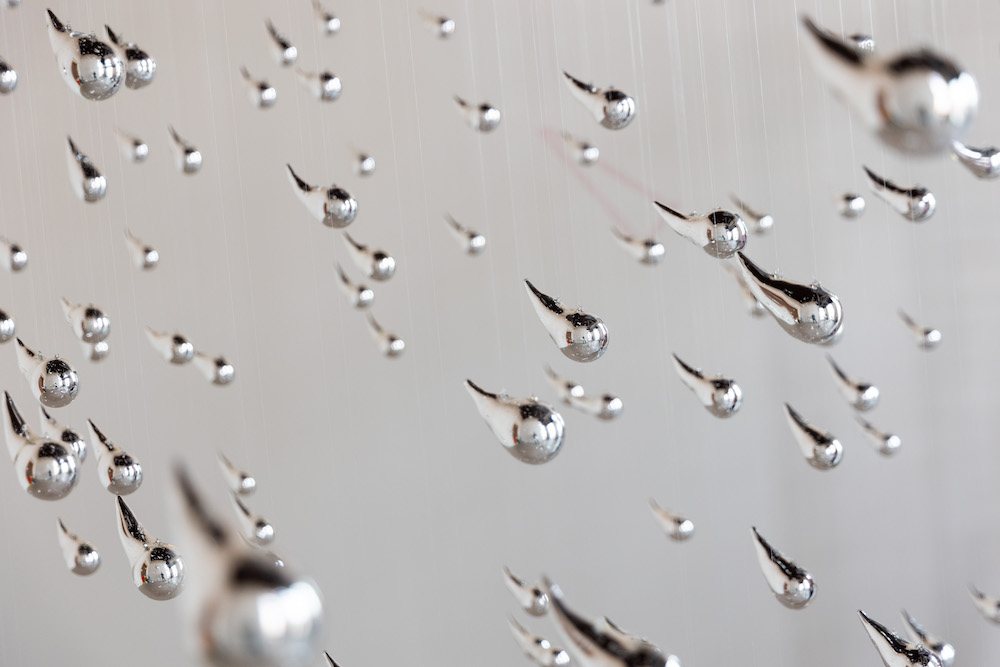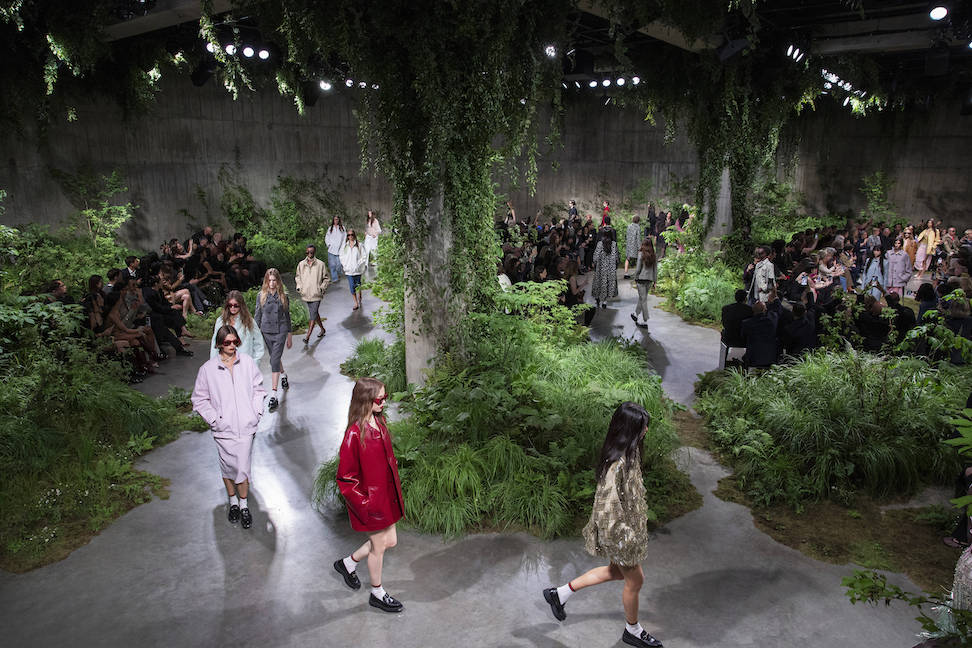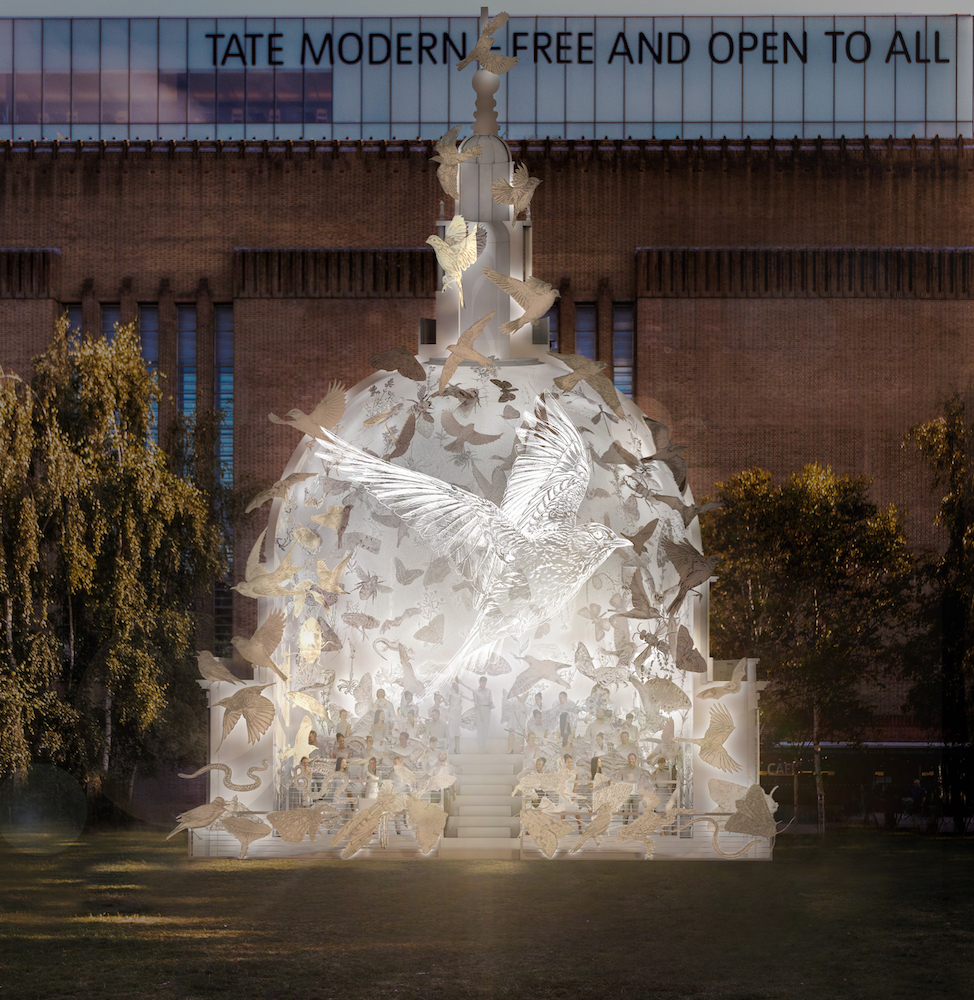The Museum of Contemporary Art, Los Angeles, recently opened the doors on a comprehensive survey of installation artist Urs Fischer’s work, curated by Tate Modern’s Jessica Morgan. The show is installed throughout several galleries at the museum’s main exhibition space, MOCA Grand Avenue, and a separate project at the warehouse-sized Geffen Contemporary. It’s the first time an artist has occupied both MOCA spaces at once.
Fischer, a Swiss-born artist living in New York, works in what he calls “clusters,” with leitmotifs ranging from skeletons in mundane situations, to cutting holes in gallery walls, to images of everyday objects screen printed onto mirrored glass boxes, to sculptures made of wax. Fischer is an enigmatic concoctor of whatever he pleases, the meaning in his work shuffling from elusive to obvious.
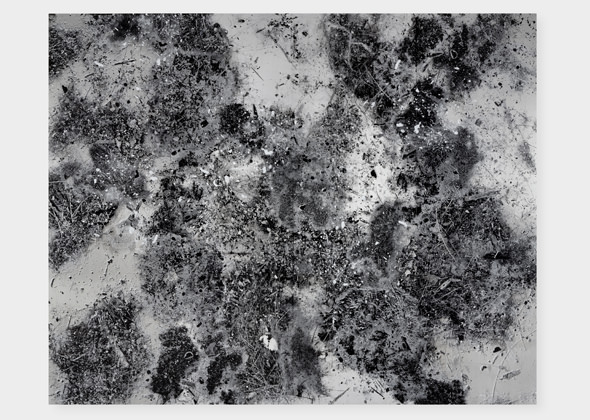 Two-component polyurethane foam, cardboard, polystyrene, polyurethane foam, tape, screws, powdered sugar, egg whites, pigments, acrylic paint
Two-component polyurethane foam, cardboard, polystyrene, polyurethane foam, tape, screws, powdered sugar, egg whites, pigments, acrylic paintWe met Fischer in the hot spring sun outside the Geffen the day before the MOCA Gala that would officially kick off the exhibition.
WHITEWALL: When you look at the different eras of your work all in one place, does it provoke a feeling?
URS FISCHER: It’s no big deal. Making the work is for you; showing the old work doesn’t feel like it’s for you. It feels like for somebody else.
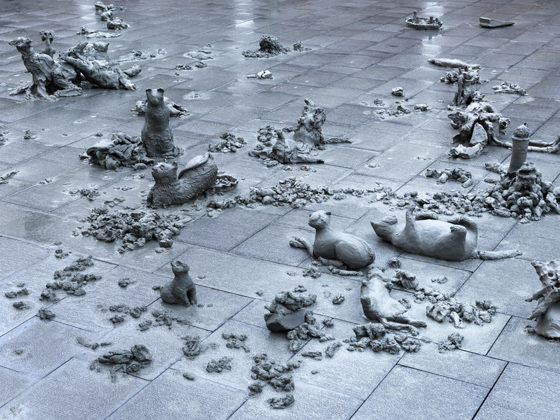 55 1/2 x 61 3/4 x 49 5/8 in.
55 1/2 x 61 3/4 x 49 5/8 in.
WW: It’s for the system?
UF: No, no, no. Not the system. It’s very complex, because you have to think about what you do. I only think about the way I do things, that’s all. It’s fart-stirring.
WW: Fart-stirring?
UF: It stirs up farts. It’s fart-provoking. Is that the wrong word?
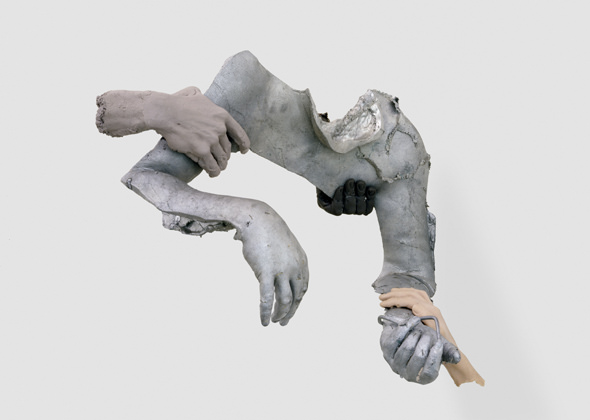 Aluminum panels, transparent primer, vinyl paint, pigments, silicone, screws
Aluminum panels, transparent primer, vinyl paint, pigments, silicone, screwsWW: I think that’ll be fine. So, when you do look at all the works, do you see an arc, or a timeline?
UF: Every time we edit a big book like [the catalogue], I have to look at every image I have. Thousands of images. Go through it. After awhile, you don’t see anything anymore.
WW: It all becomes part of an amorphous thing?
UF: I don’t know. I’m not sure I like your suggestive questions.
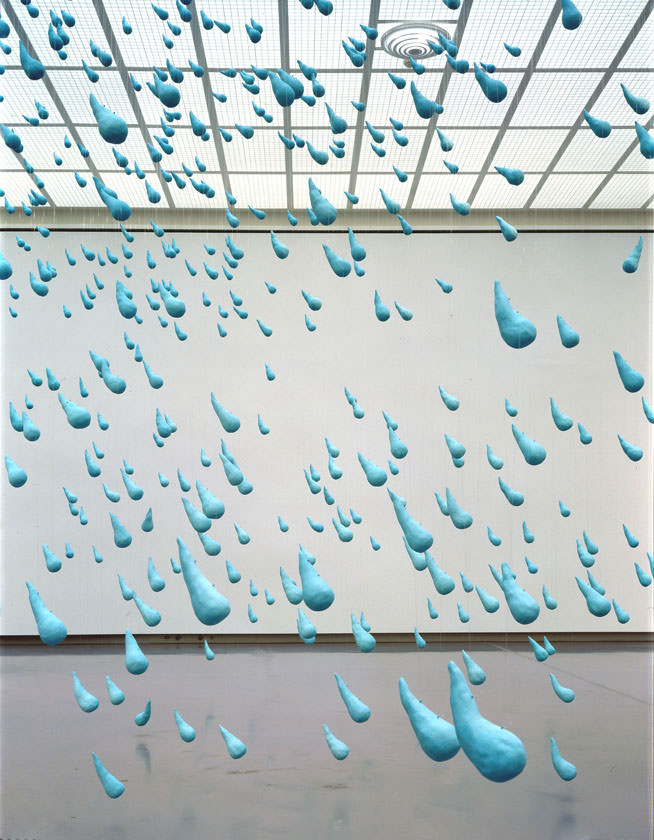 Panel 1: 132 1/8 x 177 x 3 1/8 in.
Panel 1: 132 1/8 x 177 x 3 1/8 in.WW: Sorry! I don’t mean to be suggestive, but because it is a retrospective—
UF: No, it’s a “survey.” Maybe the words don’t make a difference, but I think a retrospective, to me, has an air of objectivity, while a survey could be something else.
WW: Let’s talk about this newer piece. I was a bit surprised—
UF: “Bit surprised” means you had expectations?
WW: Perhaps, because I feel like your work up until now is solitary, or feels like it came from an artist’s studio. You never opened your work up to the public like this before. How did you overcome the hurdle of giving your process to the public?
UF: There’s no overcoming. These are suggestive questions.
WW: Okay, okay. You’re right. Fair enough.
UF: [Laughs.] I’m just telling you. No, I love people. When I’m in my studio, I enjoy having guests every day. I was never interested in being solitary and being alone to make art. I always like to have people around. And [this piece] is just an extreme form of that. This piece started because I was late for some show. I didn’t want to go there, and I didn’t have a piece to send, so I just sent a list to a friend of mine, and said, “Grab 10 people, order some clay, and you guys just do this one day.” So, they did that. Then, I did it in Venice a year ago in the courtyard of the art school [Venice Academy of Fine Arts]—70 to 80 students. It washed away. Then I did it in Paris in September. Through that, I realized there was much more possibility. What happens in a scenario like this is everybody becomes free, because nobody needs to perform. If you would have been here, you would have seen that they were all in one room—it went room by room by room by room—and everybody just starts doing something, nobody’s judgmental.
WW: It seems like they inspire each other too.
UF: Exactly. It’s a great thing. So much of art is repressed and conservative. This is just something that interests me—it breaks apart the art form. It’s not, ‘It’s a painting or it’s a this or it’s a that.’ I enjoy that too sometimes, but this is far more rewarding. Maybe not in the outcome, but when you make it.
WW: It seems like you enjoyed the process.
UF: Yeah, it’s open source. That’s a good way to put it. I never thought of that. Yeah, there is an open source element.
I always make works in clusters. There are whole variety of them. For example, in this catalogue, I can show you where I place this work. [Pulls out exhibition catalogue and flips to a section of clay works.] This comes out of these clay stories. The very first time I did [clay work], I just made a cat in a park. So it goes from that to this. All these tables and beds, these are all clusters. In some way, you could say [this clay piece] just creates another cluster. There are ways for me to think it’s not a total foreign element to what I do. But it was the most fun I had making art in a long time.
WW: That’s good. So, you’ve described your work, in conversation with Gavin Brown, as “sickly sweet.” There’s a great sense of humor and playfulness, with tongues popping out of walls, and inside the clay makers made a big pile of Jeffrey Deitch heads. Is keeping it light and approachable something that’s important to you in how a viewer enters your work?
UF: I don’t think about it. I just make what I do. If you think it’s light and approachable, that’s fine with me. Sometimes you try to navigate by control, but often at the end, you just do what you do anyway.
WW: A lot of people try to read your work, like I just did. Is it frustrating?
UF: No, because I just see all this stuff. I see the role of doing things, the way I understand it, is to get something and just go further. You just pass it along. By passing it along, you keep it alive.
WW: Once you’re done with it, it’s somebody…
UF: …else’s. Exactly. In every culture: every book you read that has been written, it’s there for us, but if you write something, you’re digesting your entire life and what you’ve read. Look: 100 years ago, first World War. What’s happened since? How much can you control what’s what and how? So, whatever micro-control you try to exercise now, where will it go? I don’t know. It doesn’t matter.
WW: So you can’t worry?
UF: Some people enjoy the worry. It’s okay. But that’s part of their persona. They’re real control freaks, and it seeps out in their work, and it’s part of the psychology of it. They try to control it some way, but when you read the entire image, you see somebody trying to control, and you think, “Why do they do this?” It’s all part of their personality. I just think you have no chance, though.
WW: Sum up your experience being in L.A. for two months working on this show.
UF: The most beautiful thing was all the people helping the project—most of them with no art background. I’ve said this before, but it’s true: one of the first forms of expression we have is art. It’s omnipresent. [Art] is maybe not the greatest communication tool anymore—there’s so many other ways to communicate. I don’t think [art] is really a thing that has a great impact anymore. It’s very popular compared to any other time in the last eleven hundred years, but it’s more in a lifestyle way or an interactive way. One the other hand, I don’t think art is on the way out. It’s not very effective.
WW: Art is not effective?
UF: It’s not very direct. Art doesn’t give you a big blast or a big impact. It has a slow impact. Over time, that’s the good part of it. But, that said, with the clay, it can also take a more immediate role.








